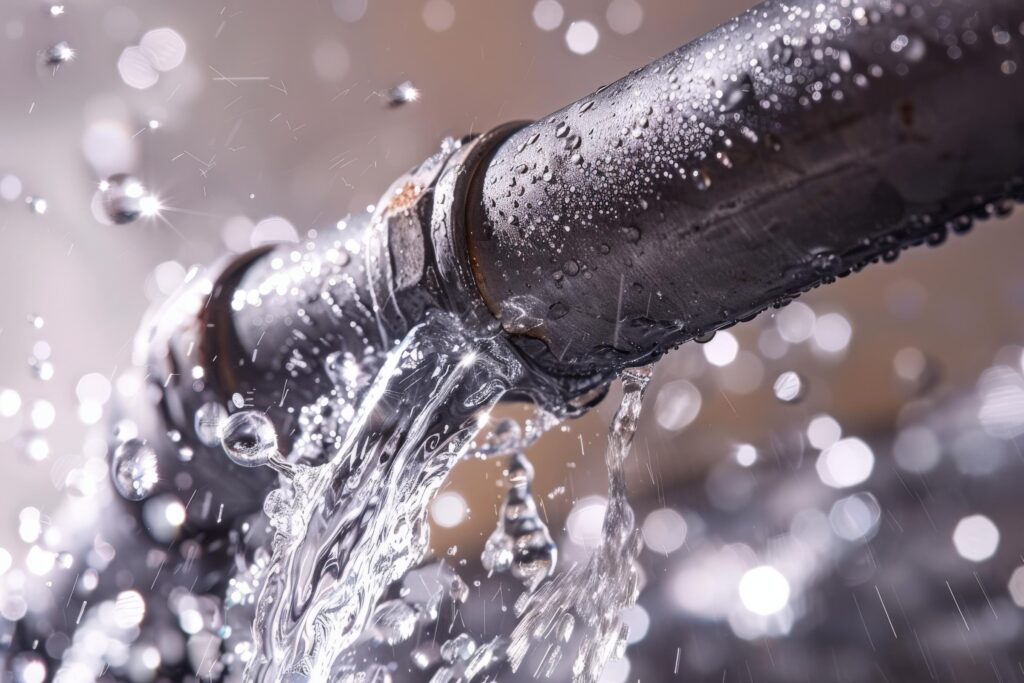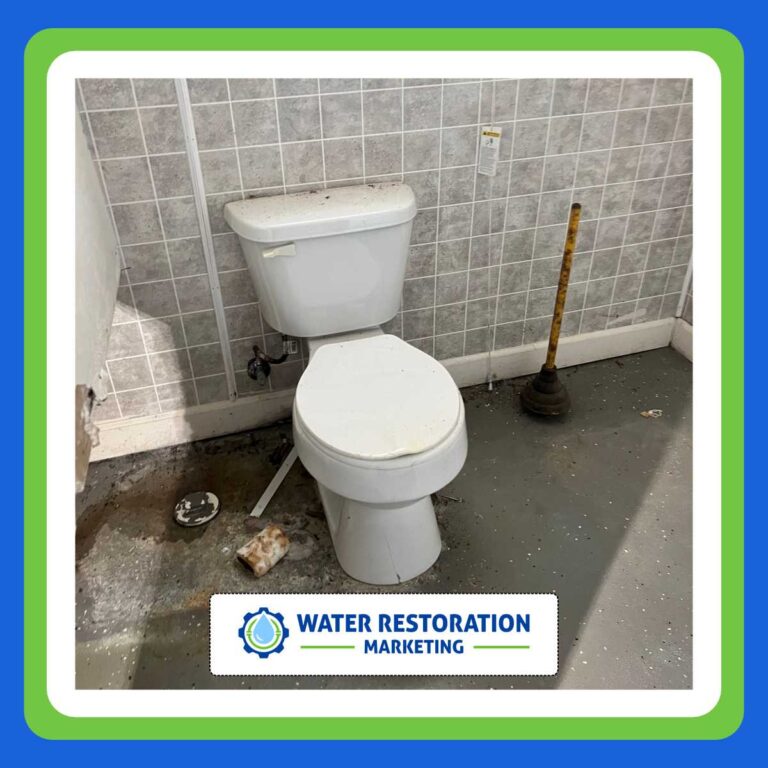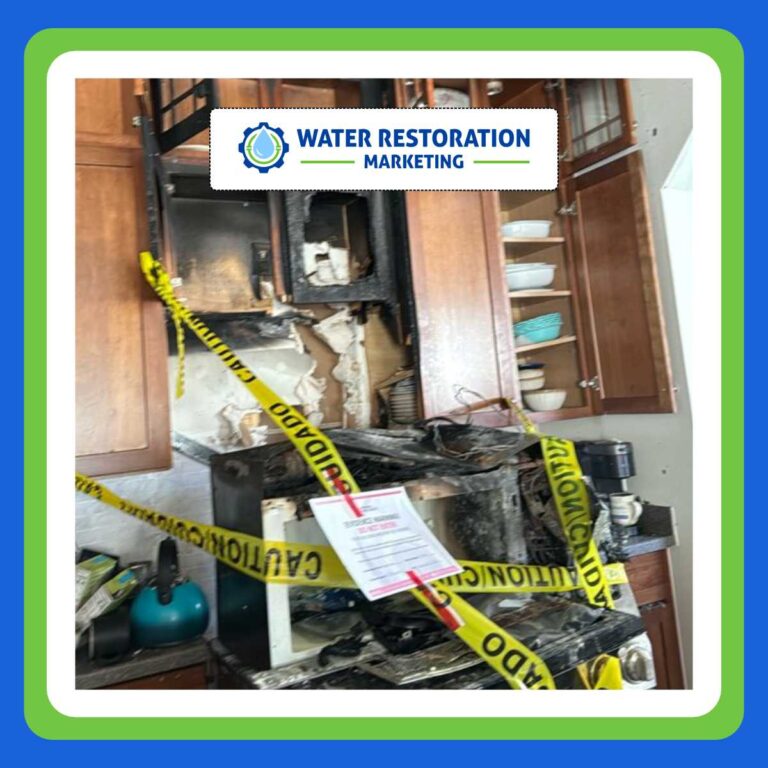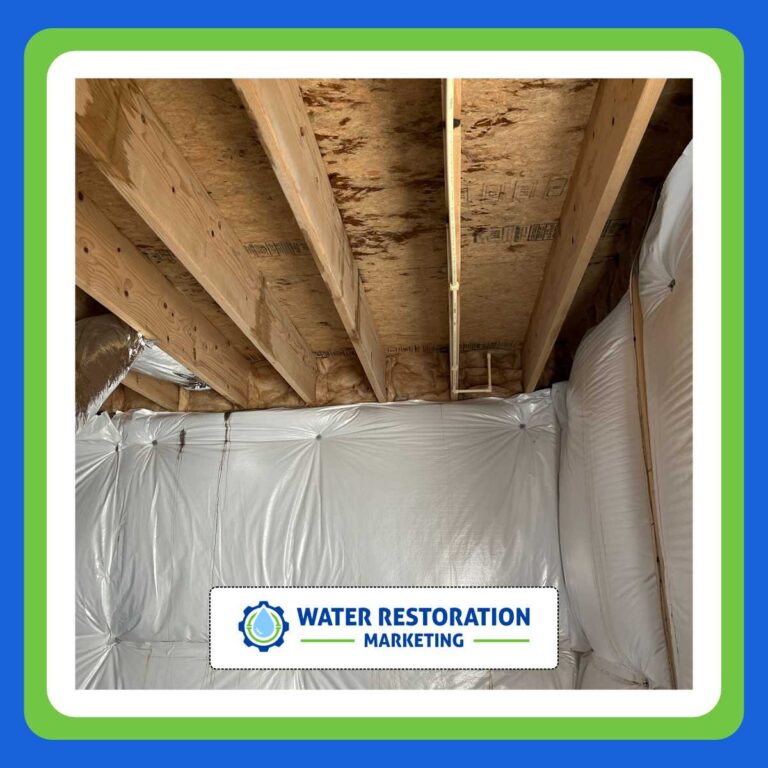
Essential Tips for Water Damage Restoration SEO
There is a critical need for effective damage restoration SEO strategies tailored to your restoration business. By understanding how to leverage local SEO, optimize your content, and enhance your online visibility, you can position your services to attract more clients. Let’s explore the essential tactics that can elevate your business in this competitive market. Incorporating damage restoration SEO techniques can significantly improve your online presence and client acquisition.
Key Takeaways
Implementing Effective Damage Restoration SEO Strategies
To excel in the competitive landscape of damage restoration, implementing effective damage restoration SEO strategies is crucial. By focusing on optimizing your website and content for relevant search terms, you can attract more clients and establish your company as a local authority in damage restoration SEO.
- Optimize your Google My Business listing with accurate information and engaging visuals to enhance local visibility in water damage restoration SEO.
- Conduct thorough keyword research to identify local, high-traffic phrases and integrate them naturally into your website content and GMB profile, including damage restoration SEO terms.
- Create high-quality, localized content that addresses common water damage concerns, using visuals like infographics and videos to boost engagement and incorporate damage restoration SEO practices.
- Ensure your website has a clear structure, fast loading times, and a responsive design for an improved user experience and lower bounce rates, crucial for damage restoration SEO.
- Foster community engagement through partnerships, guest blogging, and active social media to build authority and attract potential clients interested in damage restoration SEO.
Understanding the Importance of Local SEO for Water Damage Restoration
When it comes to water damage restoration SEO, understanding the significance of local SEO can greatly impact your business’s visibility and growth. By optimizing your online presence for local search, you ensure that potential customers in your area can easily find your damage restoration services.
This involves leveraging tools like Google My Business, confirming your NAP (Name, Address, Phone) details are consistent across platforms, and encouraging customer reviews that enhance your credibility in damage restoration SEO.
Additionally, community engagement is crucial for damage restoration SEO. Participate in local events or sponsor community activities, which boosts your brand awareness and generates backlinks to your website, improving your local SEO.
Keyword Research Strategies for Water Damage Restoration Services
To effectively target your audience, you need to focus on local keyword optimization and incorporate long-tail keywords into your damage restoration SEO strategy.
These tactics enhance your visibility in search results and attract more relevant leads.
Local Keyword Optimization
While many businesses overlook the importance of local keyword optimization, effective keyword research is essential for water damage restoration services aiming to capture their target audience through damage restoration SEO.
Start by identifying terms your potential customers use during local searches, such as “water damage repair near me” or “flood restoration [Your City]” while incorporating damage restoration SEO keywords.
Utilize keyword targeting tools to discover location-specific phrases that resonate with your community. Analyze competitors to identify gaps in their local keyword strategies, allowing you to position your services more effectively for damage restoration SEO.
Incorporate these keywords naturally in your website content, meta descriptions, and Google My Business profile to enhance damage restoration SEO.
Long-Tail Keywords Usage
Local keyword optimization sets the foundation for a robust SEO strategy, but long-tail keywords can greatly enhance your visibility in a competitive market, particularly for damage restoration SEO.
By focusing on specific phrases like “emergency water removal services in [Your City]” or “affordable mold remediation,” you tap into targeted search intent. These long-tail keyword examples attract users looking for precise solutions and help you rank higher due to less competition in damage restoration SEO.
When optimizing your content strategy, ensure that these keywords are naturally integrated into your blog posts, service pages, and FAQs. This approach enhances user experience while signaling to search engines that your content is relevant for damage restoration SEO.
Ultimately, leveraging long-tail keywords can lead to higher conversion rates and increased customer engagement in damage restoration SEO.
Creating High-Quality Content for Water Damage Topics
To create high-quality content for water damage topics, you need to focus on keyword research strategies that align with your audience’s needs, especially around damage restoration SEO.
Incorporating engaging visuals and media can enhance user experience, making your content more appealing and informative.
Additionally, emphasizing localized content ensures you connect with your community effectively, driving targeted traffic to your site in terms of damage restoration SEO.
Keyword Research Strategies
Keyword research stands as the foundation of effective content creation for water damage restoration topics. To ensure your content resonates, utilize keyword tools that help identify high-traffic, low-competition phrases related to damage restoration SEO. Conduct a thorough competitor analysis to discover what keywords your rivals target. This strategic approach allows you to fill gaps in the market and enhance your visibility through damage restoration SEO.
| Keyword Type | Importance |
|---|---|
| Long-Tail Keywords | High conversion rates |
| Local Keywords | Target specific areas |
| Seasonal Keywords | Trends and urgency |
| Problem-Solving | Customer pain points |
| Service-Specific | Tailored content focus |
Engaging Visuals and Media
Crafting high-quality content for water damage topics requires more than just well-researched keywords; it also demands engaging visuals and media that enhance the user experience, particularly for damage restoration SEO.
To capture attention, integrate compelling visual content, such as infographics, videos, and images that illustrate the impact of water damage and restoration techniques. These elements break up text and facilitate multimedia engagement, making complex concepts easier to understand for damage restoration SEO.
By using before-and-after photos or instructional videos, you can convey effectiveness and reliability. Additionally, make sure that all visuals are optimized for SEO, including alt tags and descriptions related to damage restoration SEO.
Ultimately, leveraging high-quality visuals can greatly elevate your content’s appeal and effectiveness, driving user engagement and improving search engine rankings through damage restoration SEO.
Localized Content Importance
While you might think that general water damage content suffices, localized content plays an essential role in effectively addressing the specific needs of your audience for damage restoration SEO. By implementing localized content strategies, you can enhance local audience engagement and provide solutions tailored to their unique situations.
Here’s a quick overview of how to create effective localized content for damage restoration SEO:
| Strategy | Benefit | Example |
|---|---|---|
| Use Local Keywords | Improves search visibility | “Water damage repair in [City]” for damage restoration SEO. |
| Share Local Stories | Builds community connection | Case studies from local clients benefiting from damage restoration SEO. |
| Create Local Guides | Offers valuable resources | Seasonal flooding tips for [Region], focusing on damage restoration SEO. |
Adopting these strategies increases visibility and establishes your business as a trusted local resource in damage restoration SEO.
Optimizing Your Website Structure for Better User Experience
To enhance user experience on your water damage restoration SEO website, it’s vital to structure your site intuitively. Start by implementing clear website navigation tips; ensure your menu is straightforward, allowing visitors to find critical information quickly.
Create distinct categories for services, testimonials, and contact details to streamline users’ journeys.
Next, focus on user experience design. Use a responsive layout that adapts seamlessly to different devices, as many users will browse on mobile.
Prioritize fast loading times, as delays can frustrate visitors and increase bounce rates, negatively affecting damage restoration SEO.
Additionally, consider including a search bar for easy access to specific information. Incorporate visual elements like images and videos selectively to break up text and engage users, but avoid clutter.
Leveraging Google My Business for Enhanced Visibility
Leveraging Google My Business (GMB) is essential for increasing your water damage restoration company’s visibility in local search results through damage restoration SEO. By claiming and optimizing your GMB listing, you ensure potential customers find accurate, up-to-date information about your services.
Make certain to encourage satisfied clients to leave Google reviews; these testimonials greatly enhance your credibility and help you rank higher in local searches for damage restoration SEO.
Additionally, posting updates about your services, promotions, or tips for homeowners can keep your audience engaged and informed. Regularly updating your GMB profile showcases your expertise and signals to Google that your business is active, which can improve your search rankings through damage restoration SEO.
Don’t forget to utilize high-quality images of your team in action or completed projects, as visuals can capture attention and drive engagement in damage restoration SEO.
Building Backlinks to Boost Authority in the Water Damage Niche
To strengthen your authority in the water damage niche, consider pursuing guest blogging opportunities on relevant sites related to damage restoration SEO.
Collaborating with local businesses can also create valuable backlinks while enhancing community ties in damage restoration SEO.
Guest Blogging Opportunities
While many businesses overlook the power of guest blogging, it can be a strategic tool for building backlinks and enhancing authority in the water damage niche, especially for damage restoration SEO. By implementing effective outreach strategies, you can establish valuable connections with relevant sites that cater to your target audience.
Here’s a simple table to illustrate potential guest blogging opportunities:
| Website Name | Domain Authority | Target Audience |
|---|---|---|
| WaterDamageExperts | 45 | Homeowners |
| RestorationNation | 50 | Contractors |
| FloodReliefBlog | 40 | Insurance Agents |
| DIYHomeFix | 42 | DIY Enthusiasts |
| HomeSafetyGuide | 48 | Property Managers |
Utilizing these opportunities will boost your backlinks and position you as a trusted authority in your field, particularly regarding damage restoration SEO.
Local Business Partnerships
Building strong local business partnerships can greatly enhance your authority in the water damage niche, especially when acquiring valuable backlinks for damage restoration SEO.
By engaging in community collaborations, you can create mutually beneficial relationships with local contractors, real estate agents, and insurance companies. These partnerships improve your visibility and establish you as a trusted resource for damage restoration SEO.
Leverage these connections to develop referral networks that direct potential clients to your services. Encourage partners to link to your website in their content, enhancing your backlink profile for damage restoration SEO.
Additionally, consider co-hosting events or workshops, which can generate buzz and further solidify your standing within the community.
Ultimately, strategic partnerships can notably boost your SEO efforts and lead to increased business opportunities in damage restoration SEO.
Utilizing Social Media to Engage With Potential Customers
Social media serves as a powerful tool for engaging with potential customers in the water damage restoration industry, especially when you strategically curate your content to address their specific needs through damage restoration SEO.
By implementing focused social media strategies, you can create informative posts that offer solutions to common issues, showcase successful restorations, and share helpful tips. This approach positions you as an industry authority and fosters trust and customer engagement in damage restoration SEO.
Utilizing platforms like Facebook, Instagram, and Twitter, you can interact directly with your audience, responding to inquiries and comments promptly related to damage restoration SEO.
Consider running targeted ads that reach homeowners in areas prone to water damage, ensuring your message is relevant to damage restoration SEO. Additionally, sharing testimonials and before-and-after photos can visually demonstrate your expertise, increasing your chances of attracting new clients through damage restoration SEO.
Implementing On-Page SEO Techniques for Restoration Pages
Engaging with potential customers through social media is just one aspect of an extensive digital marketing strategy for your water damage restoration business focused on damage restoration SEO.
To improve your online visibility, implementing on-page SEO techniques is essential. Start with on-page optimization by ensuring your restoration pages have targeted keywords in titles, headings, and throughout the content, particularly for damage restoration SEO. This increases relevance and helps search engines understand your offerings.
Next, establish a clear content hierarchy. Organize your information logically, using headings and subheadings to guide users through your services. This enhances user experience and allows search engines to crawl your pages more efficiently, benefiting damage restoration SEO.
Additionally, optimize images with alt tags and make certain your website loads quickly. These factors contribute to better rankings and a higher likelihood of converting visitors into customers within damage restoration SEO.
Monitoring SEO Performance Metrics for Continuous Improvement
Monitoring SEO performance metrics is essential for the ongoing success of your water damage restoration business. By conducting regular performance analysis and metric tracking, you can identify areas for improvement and enhance your online visibility through damage restoration SEO.
Here are four key metrics to focus on:
Organic Traffic: Track the number of visitors coming from search engines to gauge your content’s effectiveness in damage restoration SEO.
Bounce Rate: Monitor the percentage of visitors who leave without interacting, indicating content relevance for damage restoration SEO.
Conversion Rate: Evaluate how many visitors complete desired actions, such as filling out a contact form or calling for damage restoration services.
Keyword Rankings: Keep tabs on your position for targeted keywords, especially damage restoration SEO terms, to ensure you maintain competitive visibility.
Adapting to SEO Trends in the Water Damage Restoration Industry
As the digital landscape evolves, adapting to SEO trends is essential for your water damage restoration business to stay competitive and relevant. Focus on key areas like mobile optimization and voice search to align with current user behaviors related to damage restoration SEO. SEO algorithms increasingly prioritize content freshness and user intent, so regularly update your website with valuable information.
| SEO Trend | Action Item |
|---|---|
| Mobile Optimization | Make sure your site is mobile-friendly for better user experience in damage restoration SEO. |
| Voice Search | Optimize for conversational keywords to capture voice queries relevant to damage restoration SEO. |
| Video Marketing | Create engaging video content to enhance user interaction for damage restoration SEO. |
Incorporate schema markup to help search engines understand your content better. Conduct regular competitor analysis to identify gaps and opportunities in your SEO strategy. By staying attuned to these trends, you’ll effectively enhance your visibility and attract more clients through damage restoration SEO.
Review
In the competitive world of water damage restoration SEO, mastering SEO isn’t just beneficial; it’s essential. By implementing these strategies, you’re enhancing your online presence and building trust in your community. Think of your website as a lifeline for homeowners in distress—when they need help, your damage restoration business should be the first one they find. Stay proactive, adapt to changes, and watch your efforts transform into a steady stream of clients ready to restore their homes.


